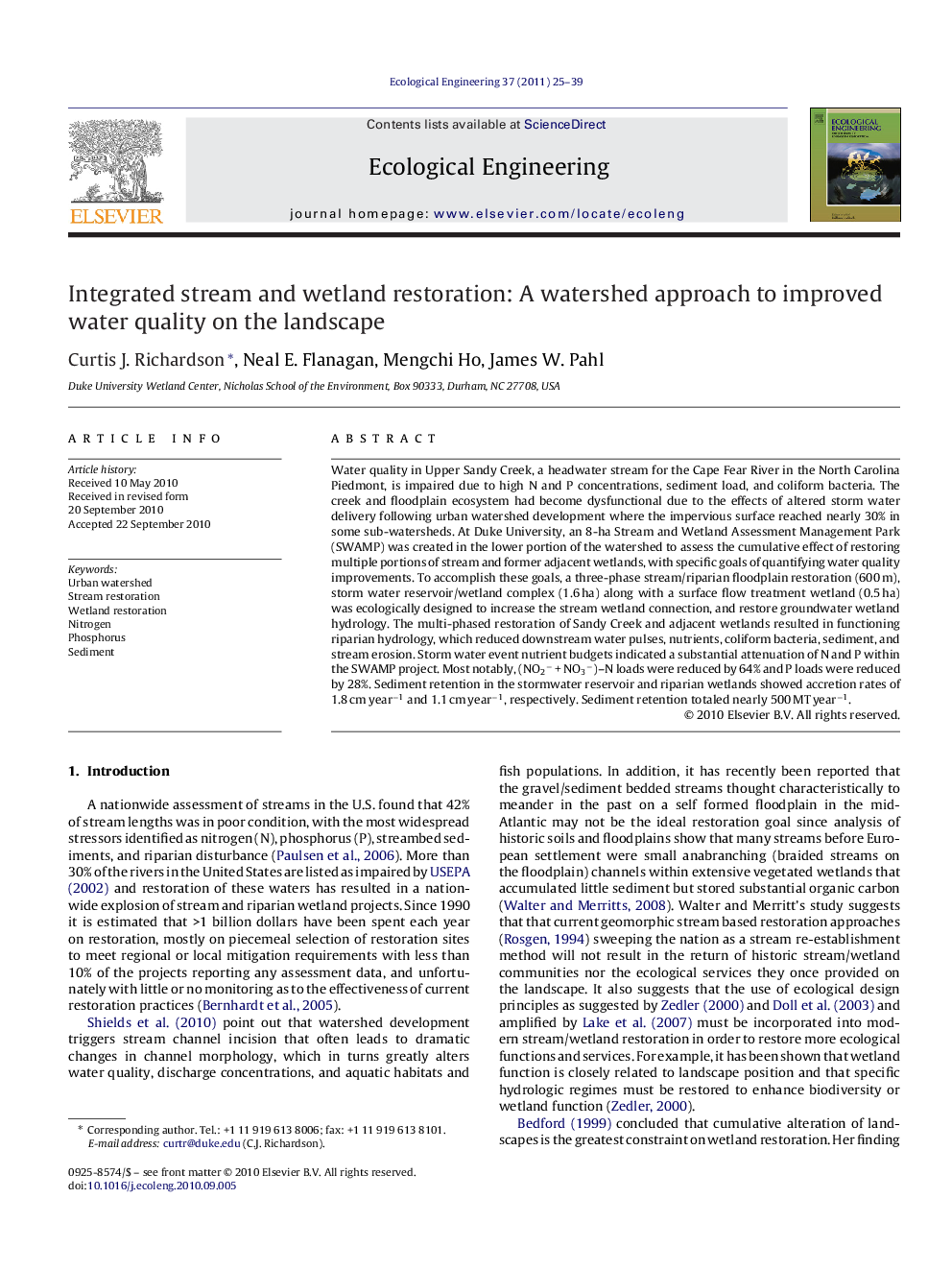| Article ID | Journal | Published Year | Pages | File Type |
|---|---|---|---|---|
| 4390427 | Ecological Engineering | 2011 | 15 Pages |
Water quality in Upper Sandy Creek, a headwater stream for the Cape Fear River in the North Carolina Piedmont, is impaired due to high N and P concentrations, sediment load, and coliform bacteria. The creek and floodplain ecosystem had become dysfunctional due to the effects of altered storm water delivery following urban watershed development where the impervious surface reached nearly 30% in some sub-watersheds. At Duke University, an 8-ha Stream and Wetland Assessment Management Park (SWAMP) was created in the lower portion of the watershed to assess the cumulative effect of restoring multiple portions of stream and former adjacent wetlands, with specific goals of quantifying water quality improvements. To accomplish these goals, a three-phase stream/riparian floodplain restoration (600 m), storm water reservoir/wetland complex (1.6 ha) along with a surface flow treatment wetland (0.5 ha) was ecologically designed to increase the stream wetland connection, and restore groundwater wetland hydrology. The multi-phased restoration of Sandy Creek and adjacent wetlands resulted in functioning riparian hydrology, which reduced downstream water pulses, nutrients, coliform bacteria, sediment, and stream erosion. Storm water event nutrient budgets indicated a substantial attenuation of N and P within the SWAMP project. Most notably, (NO2− + NO3−)–N loads were reduced by 64% and P loads were reduced by 28%. Sediment retention in the stormwater reservoir and riparian wetlands showed accretion rates of 1.8 cm year−1 and 1.1 cm year−1, respectively. Sediment retention totaled nearly 500 MT year−1.
